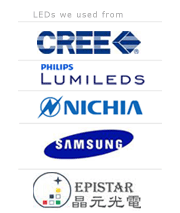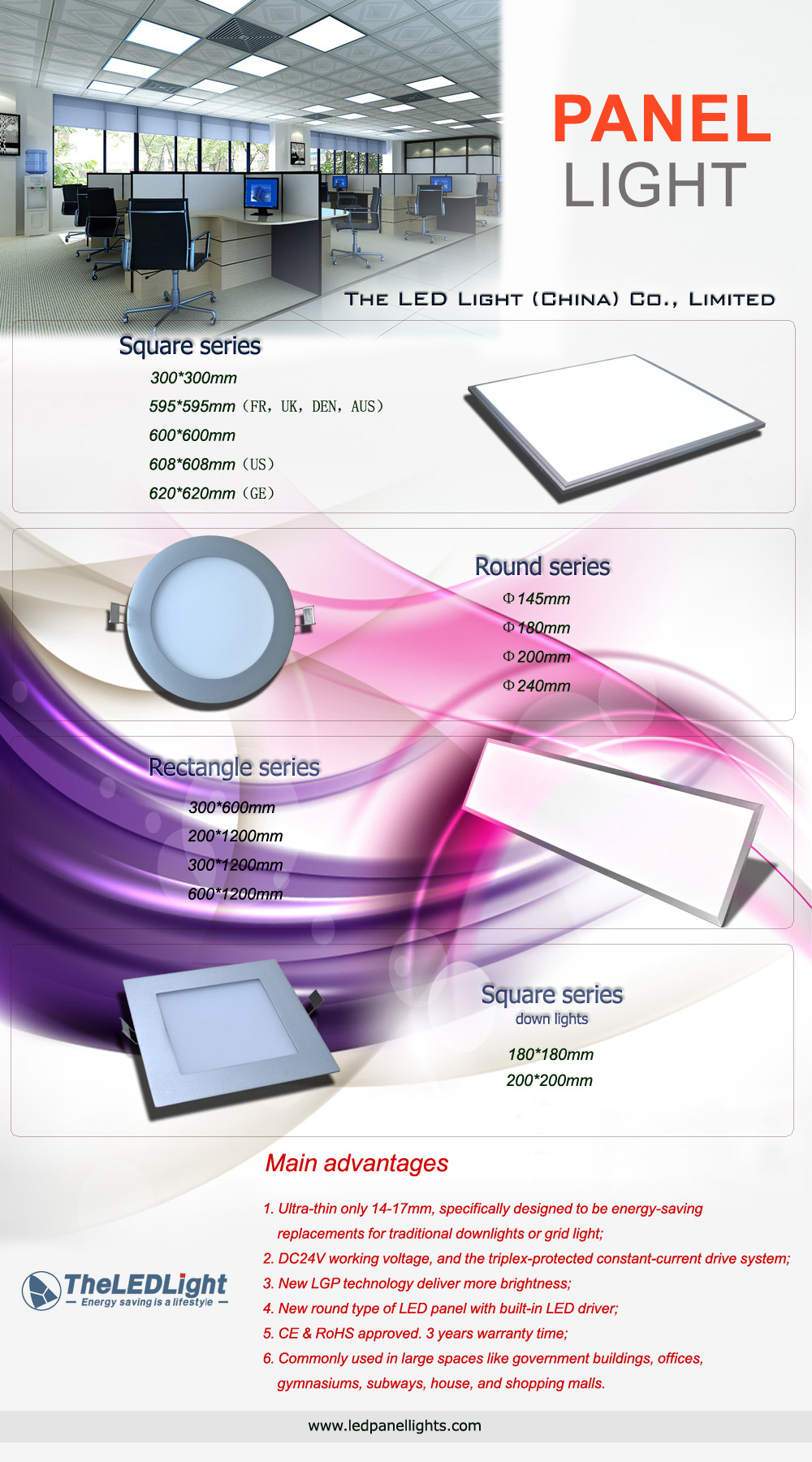News
Search
Popular search



Six Tips about LED panel light
1. Traditional fluorescent and incandescents are dead.
As manufacturers phase out traditional fluorescent tube and light bulbs that don’t meet new federal standards for efficiency, the first to go are 100-watt bulbs in 2012. The phase-out continues with 75-watt bulbs in 2013 and 60-watt and 40-watt bulbs in 2014. You could substitute halogens or compact fluorescents CFLs, but LED panel lights will take you straight into the future of lighting. LEDs have been used in flashlights and reading lights for years.
2. Long live LEDs.
Well-designed and -manufactured LED panel light are rated to last 50,000 hours (at least 30,000 hours), or at least 20 years based on eight hours’ use a day. By comparison, traditional fluorescent tube and incandescents last just a year, and CFLs from five to nine years. LEDs use about 80% less energy than incandescents to produce the same amount of light, as measured in lumens. (CFLs use about 75% less energy; halogens, 30% less.) The Department of Energy says that with rapid adoption of LED light panel, electricity demand for lighting in the U.S. could be reduced by one-third by 2027, eliminating the need for 40 new power plants.
3. They’re not cheap.
The cost of an LED panel-$50 to $200, depending on the equivalency-may give you pause. But the cost per traditional fluorescent tube and light bulbs has fallen from just two years ago, and it will continue to fall with improved technology and design and ramped-up production, says Vrinda Bhandarkar, director of research for LED lighting with Strategies Unlimited, a market-research company in Mountain View, Cal. In an analysis of all types of light bulbs, the DOE found that CFLs (which cost about $5 per bulb) beat LEDs by only $15 in net savings. If your local utility offers a rebate-typically $15 to $30 per LED panel light-you could close the gap.
4. What you’ll like.
LED light panel can be designed to cast a super even and soft light like traditional fluorescent tubes, or a bright, white light. They emit no ultraviolet radiation and produce very little heat. Flip a switch and the LED panel comes on instantly and fully. When dimmed (the LED panel must be compatible with the dimmer in your fixture), it won’t hum, flicker or change color. LEDs are resistant to vibration and breakage, and they come in a variety of specialty styles and shapes. Replacement traditional fluorescent tube frame are available in 60cm*60cm, 30cm*120cm and 60cm*120cm equivalents.
5. Research your investment.
Some manufacturers, among them General Electric, Osram Sylvania and Phillips, have Energy Star endorsements. Also, look for manufacturers and retailers that participate in the DOE’s LED Lighting Facts program. The LED panels should carry a warranty of two to three years.
6. Start slowly.
Try using LED light panels in hard-to-reach spots or heavily used areas, such as the office, family room and school. The larger the light panel, the more expensive the LED panel. And LEDs may seem brighter than the incandescents they’re designed to replace, so instead of a 3*40-watt-equivalent tube frame, try a less-costly 39-watt-equivalent. You may ultimately need to buy and try a few LEDs to find a model that works for you.




